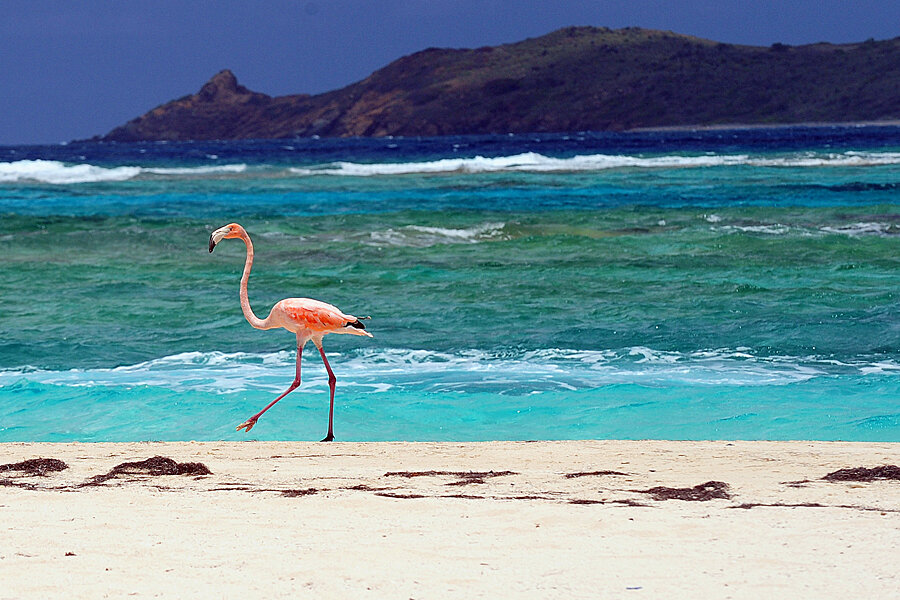Can 52 island nations convince the world to keep them afloat?
Loading...
| Nairobi, Kenya
In many nations, global warming falls low on the policy priority list: a problem too gradual and long-term to warrant immediate political muscle.
But James Fletcher, a government minister from the eastern Caribbean island nation of St. Lucia, doesn’t have that luxury.
“For some countries, discussions of climate change may be academic, but … this isn’t esoteric for us. It’s life or death,” says Mr. Fletcher, whose ministry includes sustainable development and energy.
For small island nations spattered across the Pacific, the Indian Oceans, and the Caribbean, climate change is not theoretical, they say, but is measured in miles of coastline lost to rising sea levels and in percentages of GDPs swallowed up by extreme weather events, including hurricanes.
Their officials say the failure of influential nations to respond to global warming and giant storms may be their greatest foreign policy challenge: How can a cadre of tiny islands, many of them sparsely inhabited, compel the global community to enforce the kind of environmental policy needed to keep them afloat?
Leading nations are “always eager to say nice words about climate change, but when it comes to action we’re rather much slower,” says Abdullahi Majeed, minister of state for the environment and industry in the Maldives. He came to Nairobi last week for a United Nations environmental conference.
“We talk about a carbon footprint and then we all travel from all over the world to come [to these meetings] that don’t change anything.”
A meteorologist with 40 years of experience, Mr. Majeed has reason to be frustrated. His country – a chain of some 1,200 islands south west of India – is the lowest lying nation on earth, with an average elevation of less than five feet above sea level.
An upscale resort destination with pristine beaches and five-star hotels, many scientists predict the Maldives has less than 100 years before it becomes uninhabitable.
A recent UN report finds the global average for sea level rise is about 3.2 millimeters a year but that the tropical western Pacific – where a large number of small islands are located – saw sea level rises of 12 millimeters per year between 1993 and 2009. That is four times the global average.
But the environmental menace is not just higher tides, but extreme weather events as well. In 2004, Hurricane Ivan wracked the Caribbean island of Grenada, causing damage of the equivalent of its entire GDP – about $800 million – in one day.
Most island countries, from Tuvalu in the Pacific to São Tomé and Príncipe off the coast of Gabon in West Africa, are officially classified as “middle income,” disqualifying them from most global aid money.
But their leaders argue the “middle income” classification obscures an extremely precarious financial situation.
“One extreme weather event can wipe out most of our economy in an instant,” says Moafanua Tolusina Pouli, the head of forestry for the Samoan ministry of the environment. “That leaves us more vulnerable than ever.”
The Nairobi meeting featured some other puzzling environmental challenges for islands: Where, for instance, do you dump your garbage when you’re quite literally out of space? How do you keep energy costs down when you have to ship in 100 percent of your diesel fuel from across an ocean?
One study from the Secretariat of the Pacific Community reported that imported petroleum accounts for a whopping 40 percent of GDP in Pacific Ocean island states.






